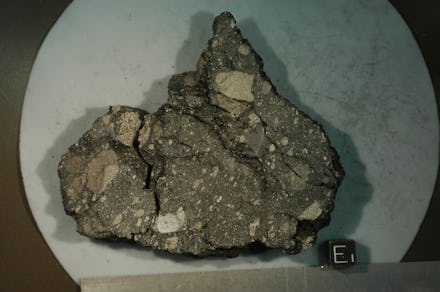The moon may have spent 2 billion years creating a giant magnetic field

Earth has an incredible superpower you’ve probably never stopped to consider: Thanks to the swirling melted metal that makes up its outer core, the planet maintains a magnetic field that protects us from the worst of the sun’s radiation.
The process is called a dynamo, and runs on the same principle as a bicycle light. In a bicycle light, pedaling moves magnets around a wire, which creates an electrical current in the wire. In Earth, the process is reversed: Electrical currents in the molten metal creates magnetic field.
The moon used to have this superpower too, long ago when its insides were also molten — between 4.5 and 3.56 billion years ago. But a new paper published in Science Advances argues the moon was able to create a magnetic field for another billion years or so, just a much weaker one.
That’s based on analysis of a hunk of moon rock nicknamed sample 15498 that was brought to Earth by the Apollo 15 mission. Whereas most of the lunar rock samples that record traces of the moon’s magnetic field are at least 3 billion years old, sample 15498 is at most 2.5 billion years old and perhaps just 1 billion years old.
Sample 15498 is kind of like cookie dough ice cream: The ice cream is glassy rock formed when an asteroid smashed into the moon and temporarily melted parts of its surface, and the cookie dough is chunks of rock that didn’t melt and ended up embedded within what did.
During the few hours while that melted rock cooled again to form the glassy parts of sample 15498, tiny magnetic crystals formed inside it. So the scientists took 20 samples of that glassy rock and slowly demagnetized it at high temperatures, letting them read the magnetic record trapped inside.
They found evidence of a much stronger field than what, say, Earth can exert on the moon from a distance, suggesting the magnetic field was on the moon itself. That’s why the scientists think their results mean the moon’s dynamo was still working during sample 15498’s creation, at least a billion years after the time of previous dynamo evidence — just with less power.
What caused that power loss is still unclear — perhaps the dynamo was being powered by different forces during the two different periods, the scientists suggest. Then something else must have happened after sample 15498’s creation for the dynamo to disappear completely and match the moon’s current state of having no magnetic field at all.
The team’s next goal, pinning down when that happened, will require finding rocks even younger than sample 15498.